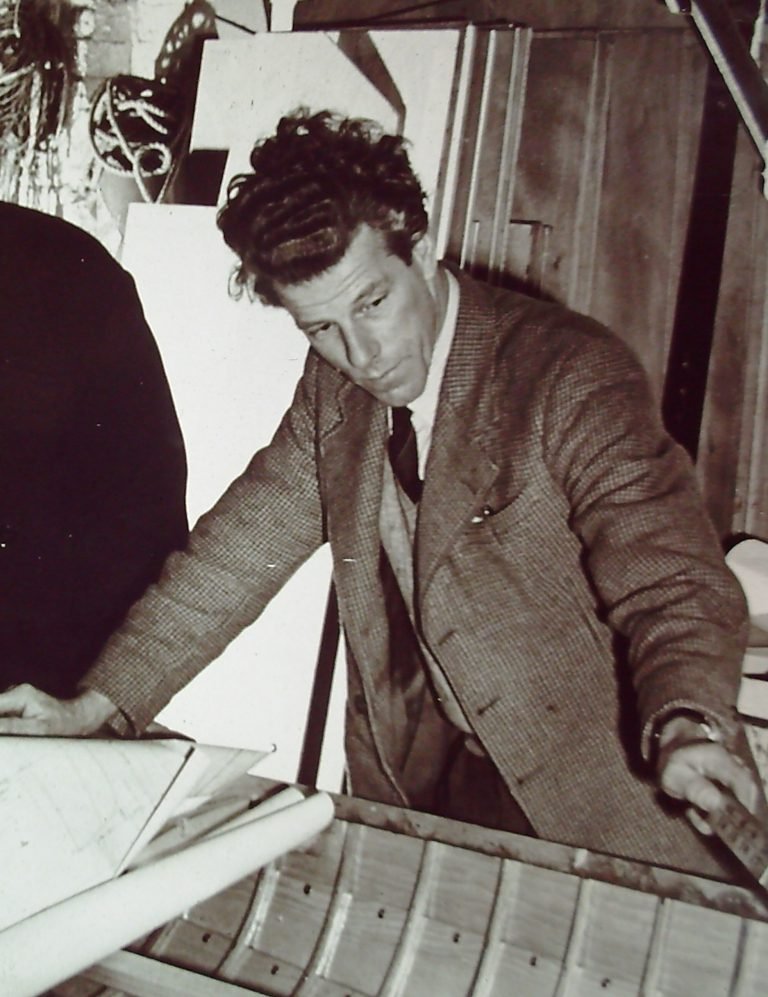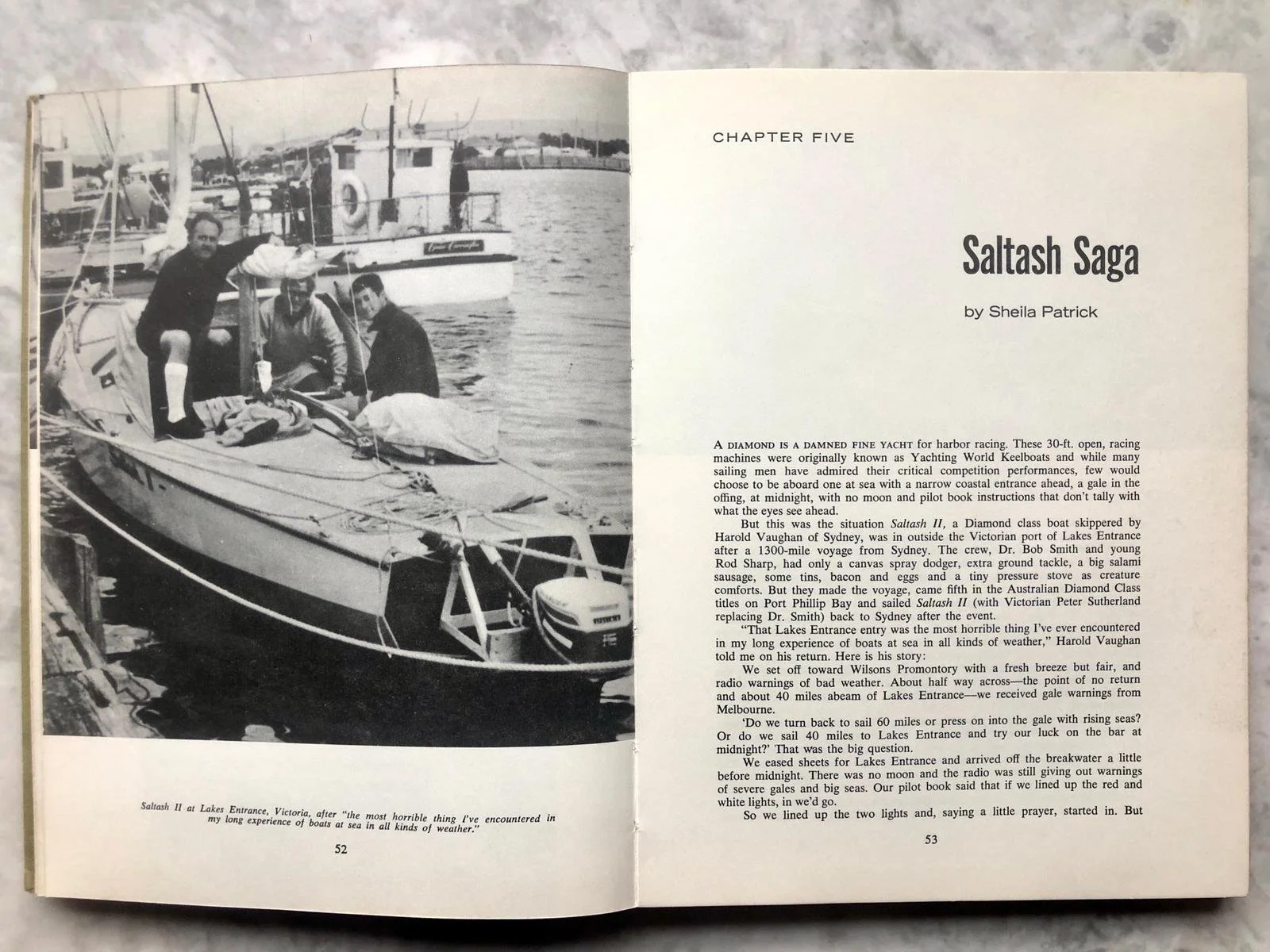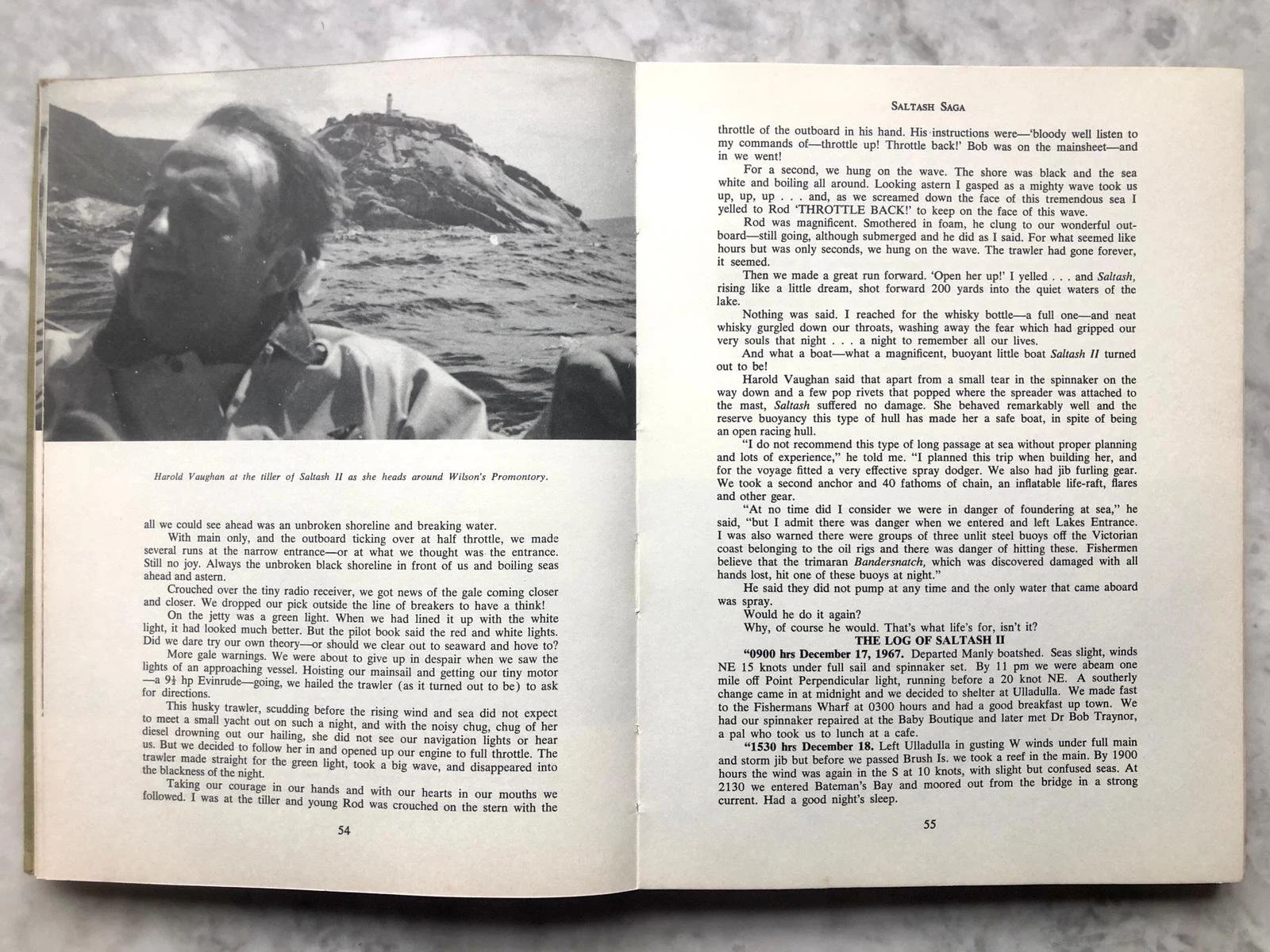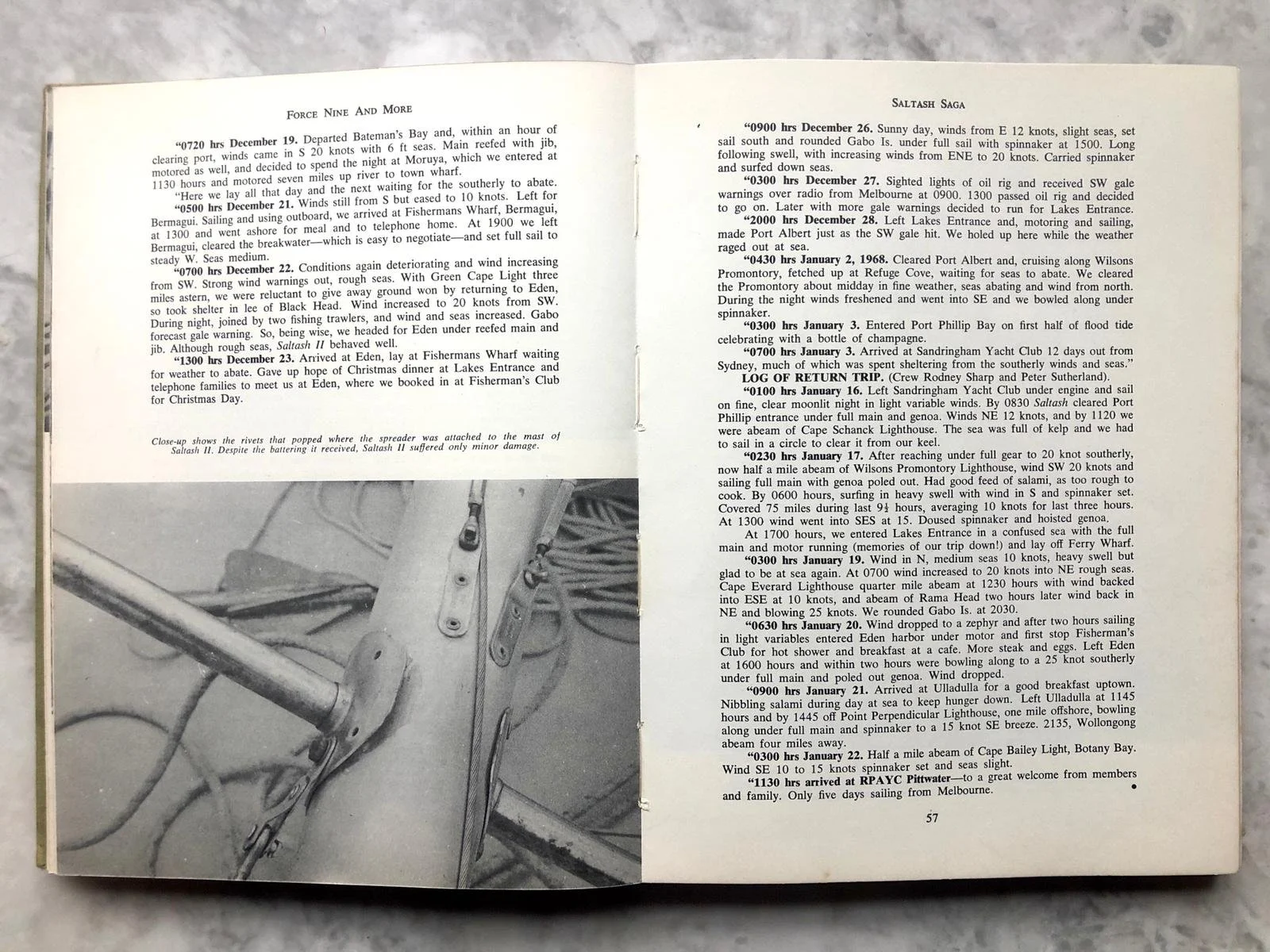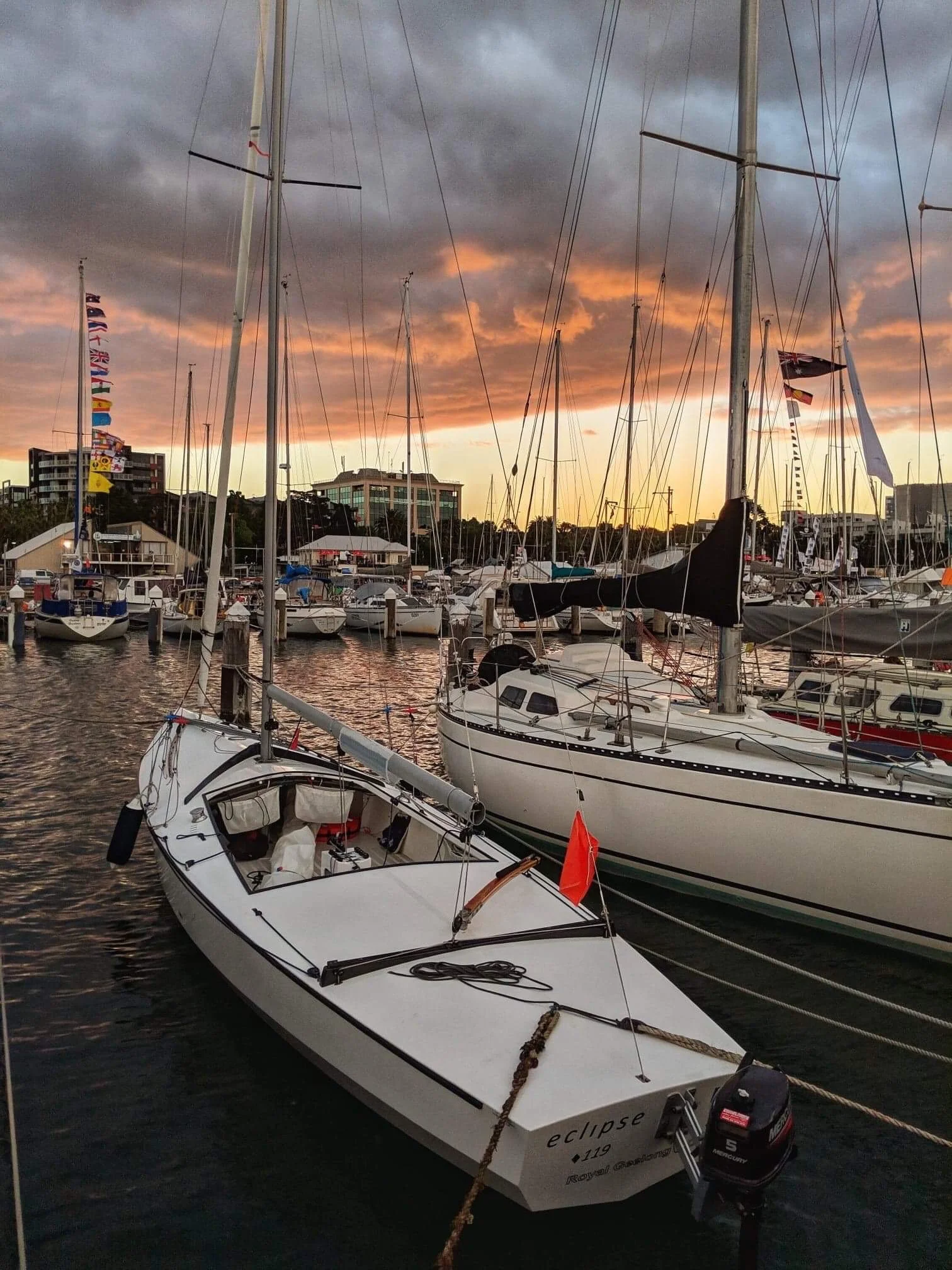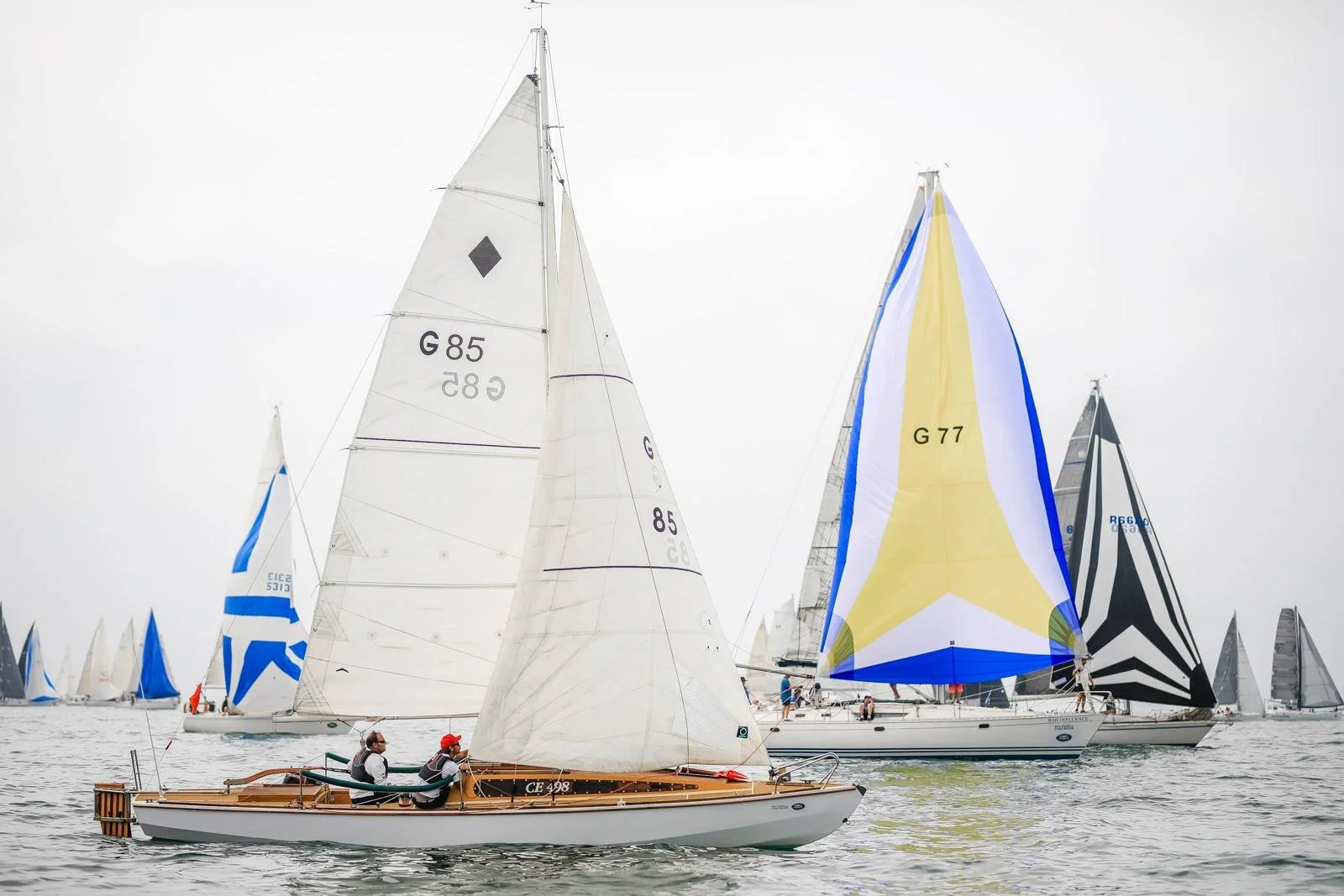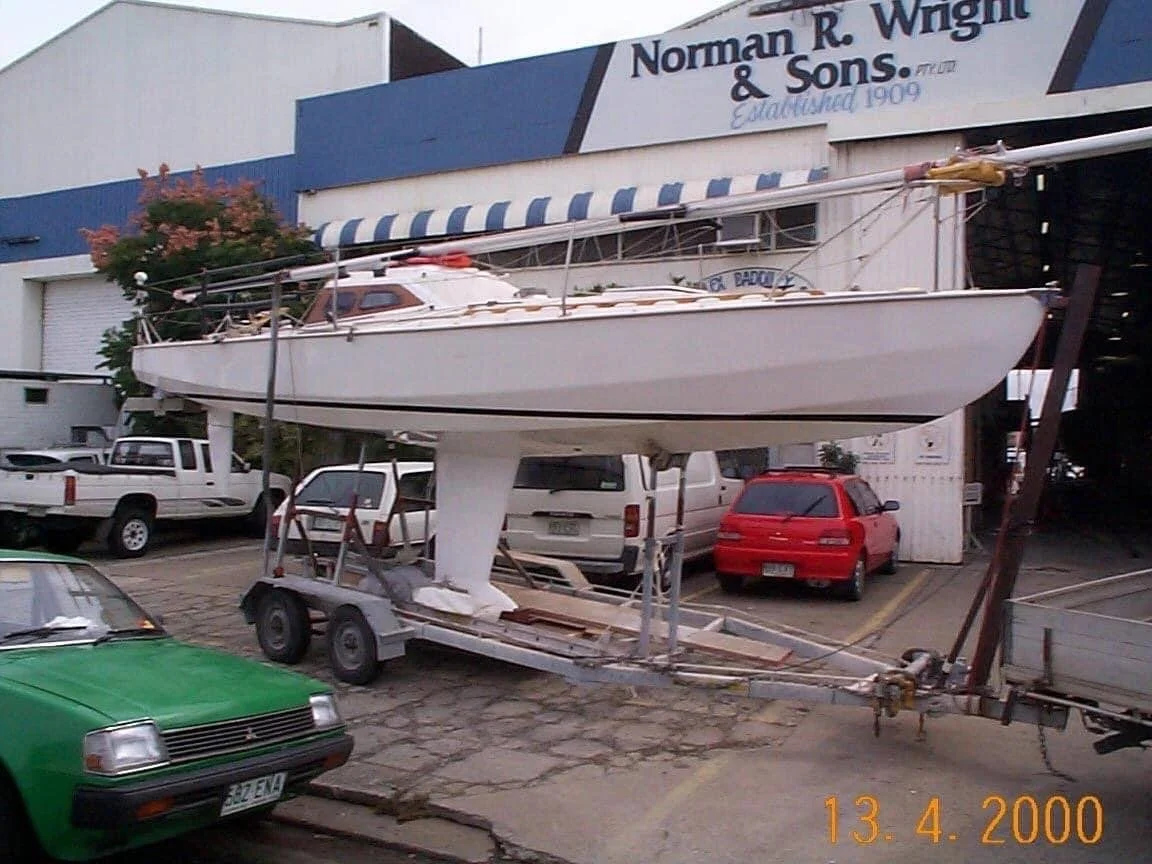Saltash & Diamonds
By Charlie Salter
RED BACK a planing Diamond from RYCV.
Photo Dave Wallace
The ocean makes us heroes or fools. This is a cautionary tale for some adventurous sailors planning to sail their recently restored Tumlaren from Melbourne to the 2023 Wooden Boat Festival in Hobart.*
The Diamond has been called the ‘Mother of all Sport Boats’. Sadly, this fast lightweight day-sailor has almost disappeared, taken over by the Soling and Etchell. They also have been superseded by boats like the J70. The class has an interesting design and social history. The 1950’s was the time of UK Prime Minister Harold Macmillan’s ‘you’ve never had it so good’ after the austerity of WW2. Yachting World magazine wanted to introduce ‘everyman’ to sailing and break the perceived elitism around yachting. They wanted an inexpensive stitch-and-glue plywood keelboat, capable of being home-built by D-I-Y enthusiasts. Jack Holt was commissioned to draw the new design. He came up with a 30ft double chine design with alloy spars and a powerful 313 sq foot rig. This light keel boat could be quickly lifted out by crane rather than rail hauled.
Yachting World Keelboat #1 ZEST was presented ‘on the pool’ at Earls Court Boat Show 1961 in London and in Yachting World magazine as A-BUILD-HER-YOURSELF DESIGN BY JACK HOLT. In 1967 the boat was renamed the YW Diamond. Holt followed on using the same construction technique with his Daily Mirror Dinghy. See SWS REFLECTIONS and MIRRORS.
The one and only genius Jack Holt with Cosmo Kramer hairstyle
Sea trials followed later. The masthead rig was adjusted to a 7/8 fractional and extra lead added to the keel to sit her down in the water giving greater drive and power. YW reported that ‘with deference to our Scandinavian friends, we have included sleeping accommodation for the crew. There are two alloy pipe cots under the foredeck useful for storing sail bags and clothes when underway. The yacht is potentially suitable for limited cruising. Conditions would be somewhat spartan but there is ample room on board for a man, his wife and a couple of small children’. This was part of YW’s interest to promote outdoor family recreation. No doubt they were also thinking about competition from the proven racer/cruiser craft like the Skerries and Tumlaren.
One big issue remained. The keelboat cockpit was not self draining. YW assured its readers that the boat was fitted with foam compartments forward and aft adequate to guarantee buoyancy of boat and crew if swamped. This is fine for inshore sailing with a rescue boat standing by, but keep this in mind when reading about SALTASH II. She was a Cat7 boat venturing offshore with only hand pumps and bailing buckets.
The original ply chine Diamond #1 ZEST ready for restoration 2018
Saltash Saga
Sheila Patrick, the Seacraft Magazine journalist, published the story of a Sydney Diamond SALTASH II in the book Force Nine and More. This boat sailed from Sydney to Melbourne and return to compete in the nationals on Port Phillip Bay in 1967-68. Paul Cannon (skipper of Diamond RED BACK) recalls keen Victorians in the 1970’s and 80’s would tow their cradled vessels to all points, including the 3,500km across the Nullarbor to Perth for the nationals.
Saltash Saga doesn’t give much inventory of safety equipment beyond a canvas dodger. The log reveals a fast and seaworthy boat skippered by her builder Harold Vaughn who was the President of the Australian Diamond Association. He had an obligation to show up to the national championship and did so in a spectacular way. He and the crew showed courage and stamina, sailing long legs, eating modest often uncooked rations to keep the boat set in 20+ knots. The last leg from Port Phillip heads to Sandringham was completed in four hours. Here’s the story. (click on images to enlarge)
S>M>S Anchorages
This is impressive offshore sailing. SWS has speculated there are some 19 anchorages between Sydney and Melbourne. In a day-sailor you might just need a break to take a shower then down a Pot-n-Parma at the RSL or hide from a gale. So push off from Pittwater to Watsons Bay - Port Hacking - Wollongong - Kiama - Jervis Bay - Ulladulla - Bermagui - Eden - behind Gabo – Lakes Entrance – Refuge Cove - Glennies - Walkerville – San Remo – Flinders - Queenscliff - Portarlington - Williamstown. We welcome Reader’s suggestions of other anchorages.
Diamond Fleets
In the 1970’s there were good Diamond fleets in the UK. In Australia the first boat was launched on Pittwater in 1962. They sailed from Royal Prince Alfred YC in Sydney, RYCV in Williamstown and Royal Brighton YC in Melbourne. Hobart, Brisbane and Perth also had fleets. The powerful Diamond always attracted quality crews that preferred racing to cruising. Even after the GRP hull was introduced in 1980, the Diamond was overtaken by the Etchell as the go-to racing boat for top class sailors.
Paul Cannon notes that fleet numbers for the old plywood boats have always waxed and waned. For the princely sum of a few thousand dollars, many were used as mooring minders in NSW. Vessels were sometimes converted with one in Perth used as the middle hull of a trimaran. In New Zealand one nutty inventor removed the rig and fitted a wind turbine connected to a prop. At RYCV Diamonds are dwindling and boats are for sale yet they still proudly flank the waterfront lawn. LUCY in the SKY, LOOSE ROCKS, DO NOT ENGAGE and ROUGH CUT are mostly confined to cradles. Perhaps they can rightfully join the Classic fleets on Port Phillip and Sydney Harbour.
Diamond #119 ECLIPSE with racing setup RGYC. Photo courtesy Neil Cusworth
Diamond #119 ECLIPSE racing at Festival of Sails Geelong 2020
Revival
Options for preserving old boats are several. For purity you can restore to original specs but this becomes a museum curiosity OR you can re-purpose. I’ve always liked the idea of re-purposing as a way to bring new life to old things.
One of the best examples is the re-building of Diamond DIANNA that has fulfilled Yachting World’s original remit for Jack Holt. She’s been beautifully converted to a true racer/cruiser. If you are not quite ready to retreat to a trailer-sailor this is a terrific solution. The racing rig and speed of the Diamond is retained with a ‘grand piano’ fit-out. The fixed keel and rudder blade are removable for low trailer transport. An in-board out-board engine-well sits forward of the tiller. A comfortable cockpit with full bulkheads leads to a cabin under a gracefully raised deck. (click on images to enlarge)
DIANNA at the Festival of Sails Geelong. Photos courtesy Neil Cusworth
There is one very successful re-purposing in Brisbane. Family boat builders, Norman Wright & Sons, purchased an old Diamond and skilfully modified her to a slippery ocean racer. They entered the very competitive 1985 Brisbane to Gladstone race and went on to win in 1999, 2001, 2003, 2005 and 2007. This boat is named SALTASH II. Surely not the same vessel?
Converted Diamond SALTASH II. The Brisbane to Gladstone flyer.
Extras
See Malcolm Lambe below. Here’s an online link to The KALORI
Editors Note
*The fore-mentioned ‘crossing of the strait’ in a recently rebuilt Tum will not be happening Charlie. Watch this space. Sal Editor and partner of one ‘fool’.
Credits
Paul Cannon Diamond #157 RED BACK, RYCV
Neil Cusworth Diamonds #119 ECLIPSE and DIANNA, RGYC
ECLIPSE & DIANNA have a facebook
Saltash Saga by Sheila Patrick in Force Nine and More. Published by K G Murray Sydney 1969.


